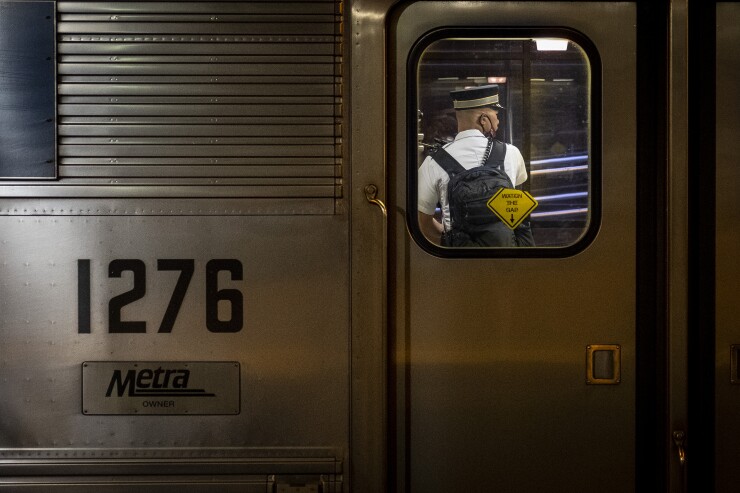Indiana officials celebrated the completion of the first of three major commuter railway projects in the northwest part of the state.
The Double Track Northwest Indiana project, a $650 million endeavor, involved the creation of a double track on the South Shore Line from Michigan City to Gary. It is now completed and producing revenue, Indiana Public Finance Director Dan Huge told The Bond Buyer.
The West Lake Corridor project, which will total $852 million in construction costs, would extend the South Shore Line’s southern branch into Lake County, Indiana, according to
Bloomberg News
And the downtown Chicago connection project, with a $200 million budget, is a collaboration with Metra, the Chicago area’s suburban commuter rail service.
The Double Track project included $173 million in funding from the Federal Transit Administration’s New Starts program and $24 million in American Rescue Plan Act funds. More than $340 million came from the state; local governments supplied $80 million; and the Northern Indiana Commuter Transportation District contributed $30 million, according to a
For the West Lake project, the state is supplying $148 million of funding. The Northwest Indiana Regional Development Authority is providing $311 million, and the FTA is contributing $393 million in grant dollars, Huge said.
The South Shore Line is paying for the Metra connection project, separately from the Double Track and West Lake projects, according to Huge.
“The state portion for both Double Track and West Lake was cash funded, with a mix of state appropriation dollars and then ARPA dollars,” Huge said. “[The] Northwest Indiana [Regional Development Authority portion] was a [Railroad Rehabilitation and Improvement Financing] loan through the Build America Bureau, and … then the cash contributions.”
Huge said the state issued no bonds for the projects.
“We were fortunate to be able to utilize RRIF — we appreciated the lower interest rate and a number of other things about RRIF, so we were happy to go the RRIF route as opposed to traditional bond finance,” he said.
Huge praised the RRIF staff, Indiana’s partners at the FTA and Indiana’s Congressional delegation, which he said were “really helpful with the funding at the federal level.” They had worked with the federal government to obtain Transportation Infrastructure Finance and Innovation Act and Water Infrastructure Finance and Innovation Act funds previously, he said, and that prepared them for the RRIF process.
“We did have a very detailed tri-party governor’s agreement that laid out each entity’s role in how the funding would occur and showed all the safeguards,” he said. “Once we got RRIF and even the FTA to understand the key components of our funding process and the governance agreements, everything went really well. … We couldn’t be more pleased with the experience.”
The Double Track and West Lake projects, which represent an investment of $1.5 billion, together were the largest commuter rail undertaking in the history of Indiana, said Sherri Ziller, president and CEO of the Northwest Indiana Regional Development Authority, which was created in 2006 by Indiana’s General Assembly to fund regional infrastructure projects and address multi-jurisdictional challenges.
“Double Track, we’re proud to say, was completed on time and on budget,” she said. “It’s really a game changer for northwest Indiana.”
Ziller said officials estimate those two projects will bring $2.7 billion in development for northwest Indiana over the next 20 years. Local governments expect over $400 million in added property tax revenues. And Ziller predicted a half-billion-dollar jump in sales and income tax for the state as a result of the rail upgrades.
“We’re very confident that those projections are going to turn out to be low,” Ziller said. “There’s already more than half a billion dollars of construction underway.”
The upgrades are spurring transit-oriented development projects all along the rail lines, both Huge and Ziller said. And Ziller said most of the development projects are in Indiana’s brand-new transit development districts, which function similarly to tax increment financing districts, of which 10 have been established, with three more expected.
“This has been a yearslong process, and I just appreciate the partnership of the South Shore, the Northwest Indiana Regional Development Authority, and our governor’s office and our legislative body for allowing all these things to happen,” said Huge. “It was a bold project, and we’re really happy to see one of the [upgrades] done, and looking forward to seeing West Lake done sometime next year.”
